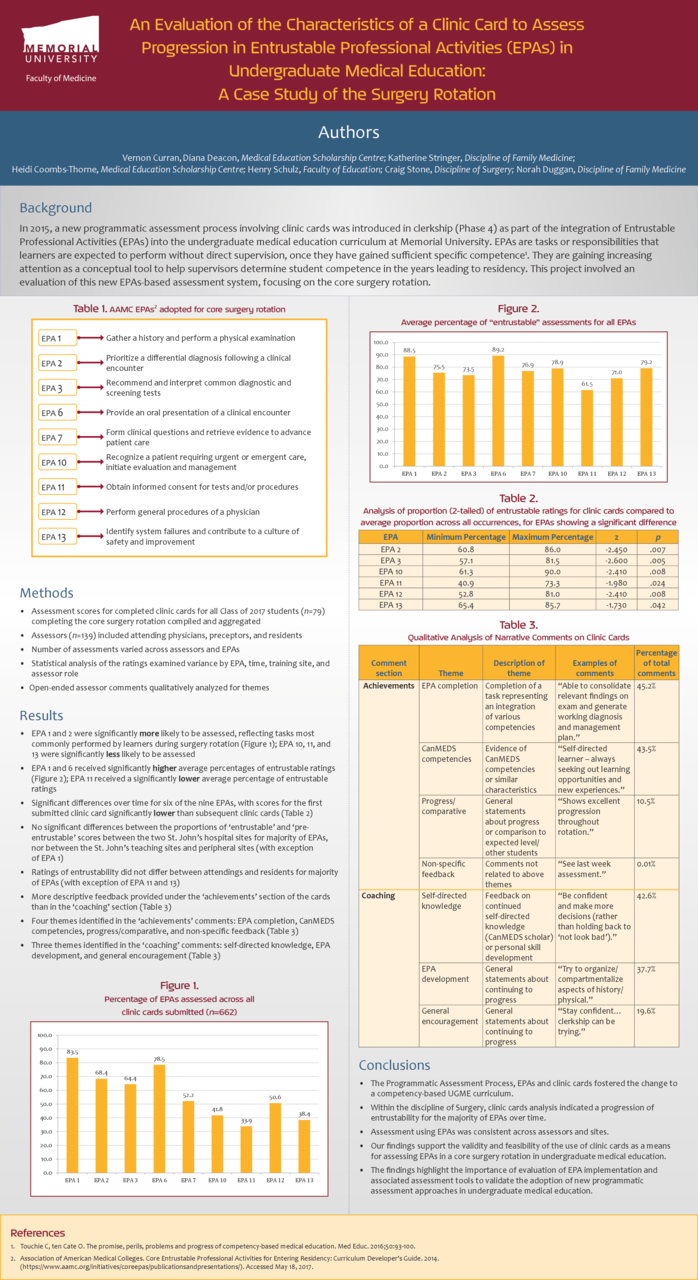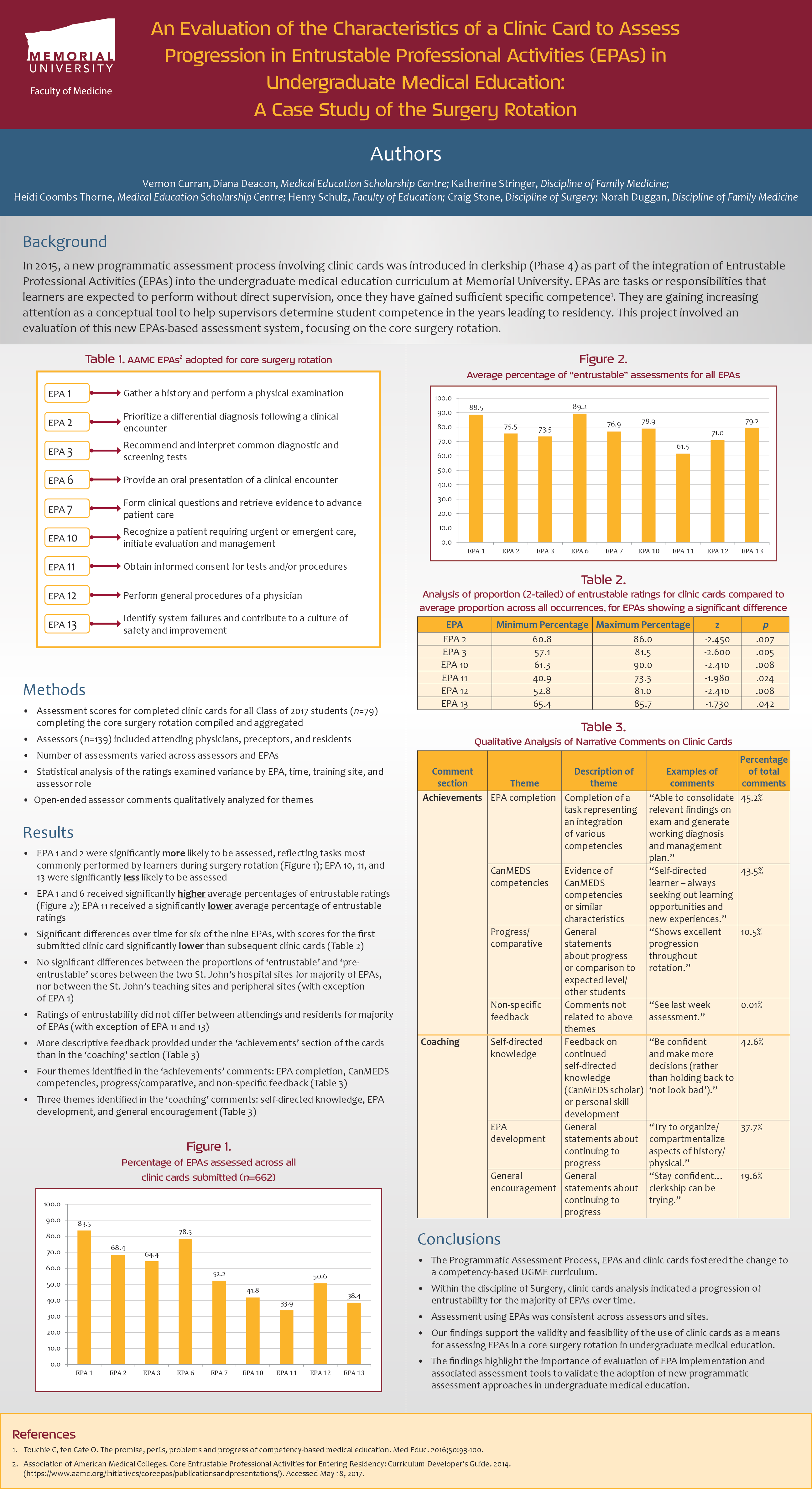Abstract
Purpose: In 2015, a new programmatic assessment process involving clinic cards was introduced in clerkship as part of the integration of Entrustable Professional Activities (EPAs) into the undergraduate medical education curriculum at Memorial University. EPAs are tasks or responsibilities that learners are expected to perform without direct supervision, once they have gained sufficient specific competence. They are gaining increasing attention as a conceptual tool to help supervisors determine student competence in the years leading to residency. This project involves an evaluation of this new EPAs-based assessment system, focusing on the surgery rotation.
Methods: The assessment scores for completed clinic cards for all students completing the core surgery rotation were compiled and aggregated for the initial academic year in which EPAs were introduced. Statistical analysis of the ratings was conducted to examine variance by time, EPA, training site, and assessor role. Open-ended comments provided by assessors on the forms were analyzed using thematic analysis.
Results: Significant increases in the proportion of entrustable ratings over time were found for the majority of EPAs. Significantly different proportions of entrustable ratings were also found for different EPAs. For the majority of EPAs, there were no significant differences in entrustable ratings between the two St. John’s hospital sites and more peripheral sites. With the exception of two EPAs, ratings of entrustability did not differ between assessors who were attendings and residents. Thematic analysis and frequency summary demonstrated that a more descriptive level of feedback was provided under the ‘achievements’ section of the cards than in the ‘coaching’ section. Four thematic categories were identified from the comments in the ‘achievements’ section: EPAs completion, CanMEDS competencies, progress/comparative, and non-specific feedback. Three categories were identified for the ‘coaching’ comments; self-directed knowledge, EPAs development, and general encouragement.
Conclusions: This analysis supports the validity and feasibility of clinic cards for assessing EPAs in a core surgery rotation in undergraduate medical education.






